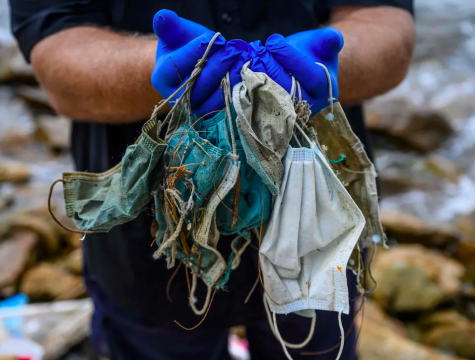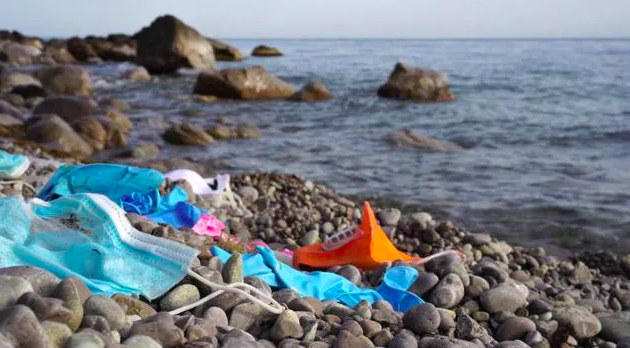The Effects of COVID on the Environment
Photo courtesy of the Hindustan Times
As the COVID pandemic continues, there are many environmental effects that have resulted from the deadly pandemic.
April 23, 2021
Ever since the pandemic began, many have assumed that the Earth’s environment has only been recovering while humanity stays indoors. The misconception that the COVID-19 pandemic has been good for the environment has fueled hope for countless people, but in reality, the effects the pandemic has taken on the environment are much worse than previously assumed.
With several lockdowns in place all around the world, interactions were put on pause, allowing the environment to heal. Since many people were staying indoors, a change in air quality occurred. A study by The National Center for Biotechnology Information (NCBI) states, “After the lockdown began on January 23, the particulate matter pollution decreased by an average of 35 percent and NO2 (nitrogen dioxide) decreased by an average of 60 percent.”
However, as lockdowns began to ease, pollution came with it. In countries that contribute a large amount of pollution to the world, the same factories, modes of transportation, and industries began to return to normal. With normalcy, the air quality and greenhouse gasses began to rise up to the pre-COVID level.
With lockdowns easing up, more people began to venture outside their house, meaning fasks masks were required with each outing. According to the Science Daily, “Recent studies estimate that we use an astounding 129 billion face masks globally every month — that is 3 million a minute. Most of them are disposable face masks made from plastic microfibers.”
As the pandemic slowly begins to ease, disposable masks and gloves have made one of the biggest impacts in pollution. Science Daily continued, “A newer and bigger concern is that the masks are directly made from microsized plastic fibers (thickness of ~1 to 10 micrometers). When breaking down in the environment, the mask may release more micro-sized plastics, easier and faster than bulk plastics like plastic bags.”
Since there has been no proper guideline on how to properly dispose of masks and gloves, most end up in the ocean, beaches, and numerous other environments. One mask that has been improperly disposed of can cause millions of particles of nanoplastics, trap animals in the elastic straps, end up in the food chain, and even possibly transfer COVID.

Masks found along the beach.
The Conversation states: “Through its sheer mass, plastic waste can smother environments and break up ecosystems. Some animals also cannot tell the difference between plastic items and their prey, subsequently choking on pieces of litter.”
Despite the environmental concerns, there are ways many Saugus students, environmentalists, and people around the globe can help to protect the Earth’s environment. For example, a great alternative to a disposable mask would be a reusable cloth mask. By replacing your disposable mask with a cloth one, it can possibly reduce the waste and lives of many animals, while also saving some money. However, if you are going to be using a single-use mask, many environmentalists suggest cutting the elastic straps before disposing of it.
With each person doing their part as society slowly begins to heal from the pandemic, the environment will heal too.

